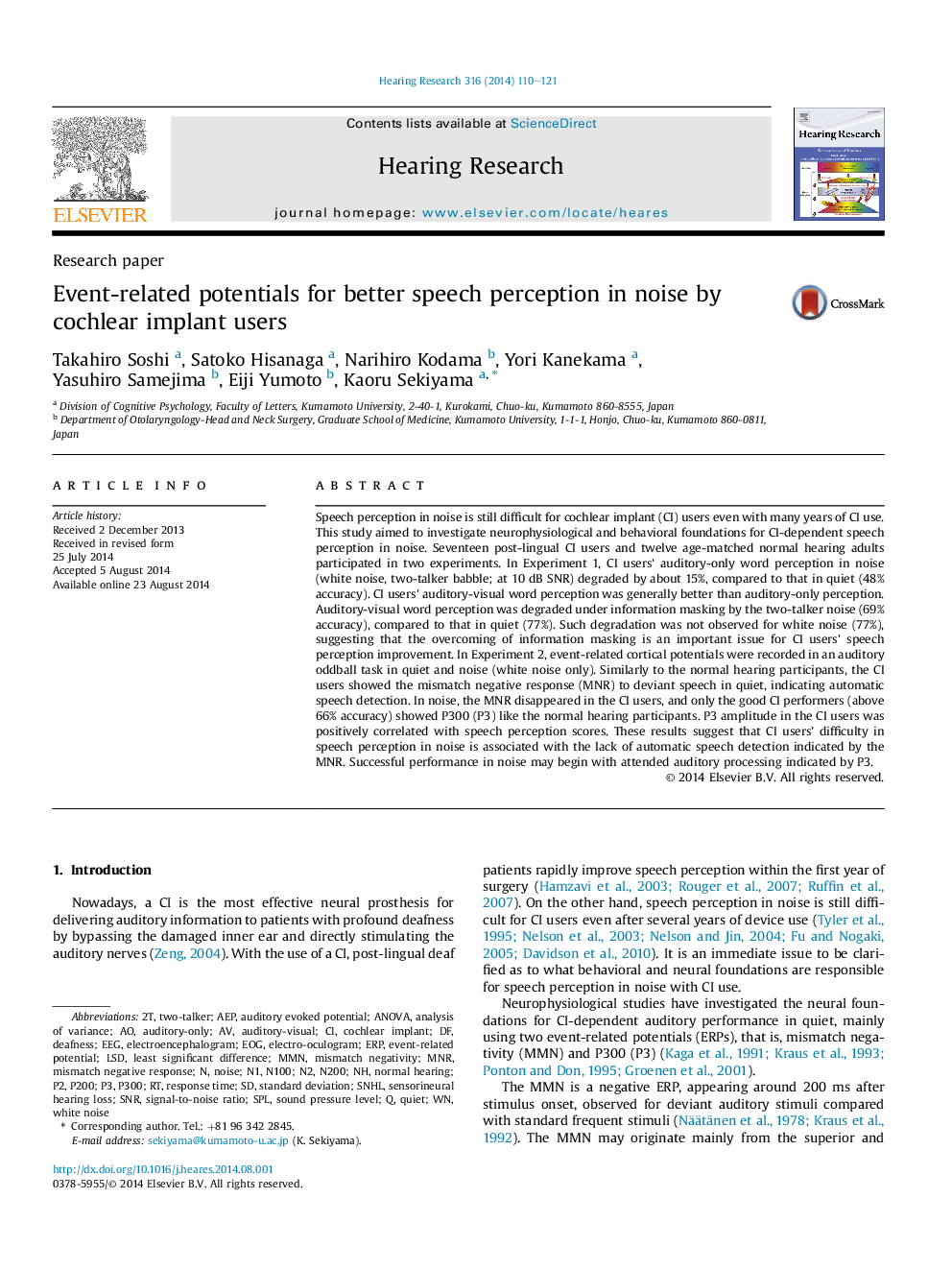| Article ID | Journal | Published Year | Pages | File Type |
|---|---|---|---|---|
| 6287426 | Hearing Research | 2014 | 12 Pages |
â¢Neuropsysiological response for CI users' speech perception in noise was recorded.â¢Early Mismatch negative responses to speech disappeared in noise for the CI users.â¢Late positive response (P3) was observed for the good, but not poor, CI performers.â¢P3 can be an objective marker to evaluate CI users' superior speech perception in noise.
Speech perception in noise is still difficult for cochlear implant (CI) users even with many years of CI use. This study aimed to investigate neurophysiological and behavioral foundations for CI-dependent speech perception in noise. Seventeen post-lingual CI users and twelve age-matched normal hearing adults participated in two experiments. In Experiment 1, CI users' auditory-only word perception in noise (white noise, two-talker babble; at 10Â dB SNR) degraded by about 15%, compared to that in quiet (48% accuracy). CI users' auditory-visual word perception was generally better than auditory-only perception. Auditory-visual word perception was degraded under information masking by the two-talker noise (69% accuracy), compared to that in quiet (77%). Such degradation was not observed for white noise (77%), suggesting that the overcoming of information masking is an important issue for CI users' speech perception improvement. In Experiment 2, event-related cortical potentials were recorded in an auditory oddball task in quiet and noise (white noise only). Similarly to the normal hearing participants, the CI users showed the mismatch negative response (MNR) to deviant speech in quiet, indicating automatic speech detection. In noise, the MNR disappeared in the CI users, and only the good CI performers (above 66% accuracy) showed P300 (P3) like the normal hearing participants. P3 amplitude in the CI users was positively correlated with speech perception scores. These results suggest that CI users' difficulty in speech perception in noise is associated with the lack of automatic speech detection indicated by the MNR. Successful performance in noise may begin with attended auditory processing indicated by P3.
